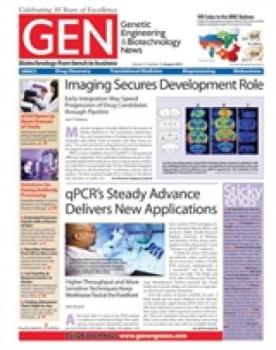A biotech publisher across the world, Genetic Engineering & Biotechnology News (GEN) reports that the decrease in the sample sizes to still smaller sizes has led to the development of advanced mass spectrometry instrumentation.
 Genetic Engineering & Biotechnology News (GEN) has retained its position as the number one biotech publisher around the globe since its launch in 1981.
Genetic Engineering & Biotechnology News (GEN) has retained its position as the number one biotech publisher around the globe since its launch in 1981.
The focus of GEN's news and technology includes the complete lifecycle of a bioproduct right from initial-stage R&D to applied research. According to GEN’s August issue, with respect to specific applications, unique nanoflow separation techniques are improvising the accuracy and speed with which researchers can evaluate biomarkers.
John Sterling, GEN’s Chief Editor, stated that based on biomarker evaluation on more flexible mass spec-based tools, opportunities have been provided for increasing biomarkers’ clinical applications. For instance, Proteome Sciences performs discovery of protein biomarker, evaluation, and development of mass spectrometry assay as well as it develops commercial assays for treating Alzheimer's disease. The company has collaborated with Thermo Fisher Scientific and created isobaric tagging technology in Tandem Mass Tags that enables users to examine up to six samples for each cycle on the Thermo Orbitrap Velos mass spectrometry system.
University of North Carolina researchers in Chapel Hill have introduced an integrated MS technique based on microfluidic capillary electrophoresis with the help of multiplexed fragmentation which is data independent to carry out proteomics providing an increased throughput. This methodology can be applied to characterize protein-based biotherapeutics and to perform a bottom-up proteomic approach.
GEN’s article explains about enhanced mass spectrometry methods applied at the Leiden University Medical Center in Netherlands, University of Washington (Seattle), and at firms such as Dionex, Agilent Technologies, Analytical Scientific Instruments, OpAns, Waters, and New Objective.